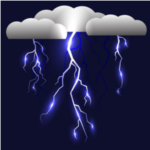Table of Contents
Introduction
Errors in computing can be perplexing, especially when they seem to arise out of nowhere. One such error that macOS users might encounter is: errordomain=nscocoaerrordomain&errormessage=could not find the specified shortcut.&errorcode=4. This article delves into the causes, implications, and solutions for this specific error message.
What is NSCocoaErrorDomain?
[errordomain=nscocoaerrordomain&errormessage=could not find the specified shortcut.&errorcode=4] The NSCocoaErrorDomain is a framework used by Apple’s macOS and iOS operating systems. It encompasses a wide range of errors that can occur during the execution of applications. These errors are categorized under different codes, making it easier for developers and users to diagnose and troubleshoot issues.
Breakdown of the Error Message
[errordomain=nscocoaerrordomain&errormessage=could not find the specified shortcut.&errorcode=4]

The error message errordomain=nscocoaerrordomain&errormessage=could not find the specified shortcut.&errorcode=4 can be broken down into three components:
- Error Domain (
nscocoaerrordomain): Indicates that the error falls under the Cocoa framework. - Error Message (
could not find the specified shortcut): Provides a brief description of the issue. - Error Code (
4): A specific code associated with this type of error.
Common Causes
[errordomain=nscocoaerrordomain&errormessage=could not find the specified shortcut.&errorcode=4]
Several factors could lead to this error, including:
- Missing Shortcut: The specified shortcut might have been deleted or moved.
- Corrupted Shortcut File: The shortcut file might be corrupted and thus inaccessible.
- Permission Issues: The application might not have the necessary permissions to access the shortcut.
- Software Bugs: There might be a bug in the application or the operating system causing the error.
Implications
[errordomain=nscocoaerrordomain&errormessage=could not find the specified shortcut.&errorcode=4]
Encountering this error can disrupt the smooth functioning of applications that rely on shortcuts for quick access to files or functions. It can lead to:
- Inconvenience: Users might find it inconvenient to manually navigate to the required files or functions.
- Reduced Productivity: Regular use of shortcuts enhances productivity, and their absence can slow down tasks.
- Potential Data Loss: If the error is linked to a corrupted shortcut that points to important data, there is a risk of losing access to that data.
Troubleshooting Steps

[errordomain=nscocoaerrordomain&errormessage=could not find the specified shortcut.&errorcode=4]
To resolve the error, users can follow these steps:
- Check the Shortcut Location: Verify if the shortcut exists in the specified location.
- Recreate the Shortcut: If the shortcut is missing, recreate it and ensure it points to the correct file or function.
- Check Permissions: Ensure that the application has the necessary permissions to access the shortcut.
- Update Software: Check for updates for both the operating system and the application to fix any bugs.
Advanced Troubleshooting
[errordomain=nscocoaerrordomain&errormessage=could not find the specified shortcut.&errorcode=4]

For more advanced users or developers, additional steps include:
- Check Logs: Review system logs to identify any additional error messages that might provide more context.
- Debugging: Use debugging tools to trace the application’s behavior and identify where it fails to find the shortcut.
- Consult Documentation: Refer to Apple’s developer documentation for detailed information on the NSCocoaErrorDomain and error code 4.
Preventive Measures
[errordomain=nscocoaerrordomain&errormessage=could not find the specified shortcut.&errorcode=4]
To prevent this error from occurring in the future, consider the following measures:
- Regular Backups: Regularly back up shortcuts and important files to avoid loss due to corruption or deletion.
- Routine Maintenance: Perform routine maintenance on the operating system to ensure it runs smoothly and efficiently.
- User Training: Educate users on the importance of not deleting or moving shortcuts that are crucial for application functionality.
Conclusion
The errordomain=nscocoaerrordomain&errormessage=could not find the specified shortcut.&errorcode=4 error is a common issue that can affect the productivity of macOS users. By understanding its causes, implications, and solutions, users can effectively troubleshoot and resolve the error, ensuring a smoother computing experience.
Additional Resources
For further reading and resources, users can explore:
- Apple’s Developer Documentation: Provides in-depth information on the Cocoa framework and error handling.
- Community Forums: Platforms like Stack Overflow where users share their experiences and solutions.
- Technical Support: Contact Apple Support for personalized assistance with persistent issues.
By being proactive and informed, users can mitigate the impact of such errors and maintain the efficiency of their workflows.
FAQs: errordomain=nscocoaerrordomain&errormessage=could not find the specified shortcut.&errorcode=4
1. What does the error errordomain=nscocoaerrordomain&errormessage=could not find the specified shortcut.&errorcode=4 mean?
This error indicates that a macOS or iOS application is unable to locate a specified shortcut. The error is categorized under the Cocoa framework, which is used for macOS and iOS development.
2. What is the NSCocoaErrorDomain?
The NSCocoaErrorDomain is a framework used by Apple’s operating systems (macOS and iOS) to handle a wide range of errors that can occur during application execution. It provides error codes and messages to help diagnose and troubleshoot issues.
3. What are the common causes of this error?
Common causes include:
- The specified shortcut has been deleted or moved.
- The shortcut file is corrupted.
- The application lacks necessary permissions to access the shortcut.
- There are bugs in the application or the operating system.
4. How can I check if the shortcut exists?
Navigate to the location where the shortcut is supposed to be and verify its presence. If it’s missing, you might need to recreate it.
5. How do I recreate a missing shortcut?
You can recreate a shortcut by right-clicking the target file or folder, selecting “Make Alias” (on macOS), and then moving the alias to the desired location.
6. How can I check permissions for the shortcut?
Right-click on the shortcut, select “Get Info,” and review the permissions section to ensure the application has the necessary access.
7. What should I do if the shortcut file is corrupted?
Delete the corrupted shortcut and create a new one. Ensure the target file or folder is not corrupted as well.
8. Can software updates fix this error?
Yes, updating your operating system and the application can fix bugs that might be causing this error. Always ensure your software is up to date.
9. How do I check system logs for more information on the error?
You can use the Console application on macOS to check system logs. Look for entries related to the error message and the application experiencing the issue.
10. What are some preventive measures to avoid this error in the future?
- Regularly back up shortcuts and important files.
- Perform routine maintenance on your operating system.
- Educate users on the importance of not deleting or moving crucial shortcuts.
11. Where can I find more information about NSCocoaErrorDomain and error code 4?
Apple’s Developer Documentation provides detailed information about the NSCocoaErrorDomain and specific error codes. It’s a valuable resource for developers and advanced users.
12. Can third-party applications cause this error?
Yes, third-party applications that create or manage shortcuts can potentially cause this error if they malfunction or are not properly configured.
13. Is it possible to recover a deleted shortcut?
If you’ve recently deleted a shortcut, you might be able to recover it from the Trash (on macOS) or a backup.
14. How do I contact Apple Support for help with this error?
Visit Apple’s support website or use the Support app on your device to contact Apple Support for personalized assistance.
15. Are there community forums where I can get help with this error?
Yes, forums like Stack Overflow, Apple Support Communities, and Reddit have active user communities where you can seek advice and share solutions for this error.











